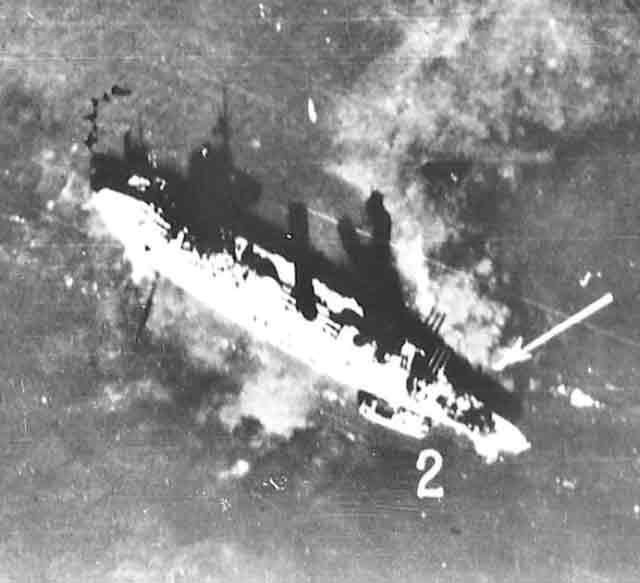Tuesday 23 September 1941
Eastern Front: The Luftwaffe has been pounding Leningrad for weeks now as of
23 September 1941. However, the Germans are learning that their medium bombers and Stuka dive bombers are not having much impact. While the bombers are effective for what they were designed - supporting the army - they are ineffective in a strategic role in Russia just as they were against London in 1940.
 |
| Stuka Ju-87Ds over the Russian Front. |
Part of the problem for the Germans is that Leningrad is simply too large and has too many strong stone buildings. Other problems are the fierce anti-aircraft defenses over the city, which comes from artillery, defending fighters, and the Soviet fleet anchored at Kronstadt. The Luftwaffe has not had much impact against any of these, but today it makes a determined effort against the ships many of which are damaged but whose anti-aircraft and main guns remain in action.
 |
| Hans-Ulrich Rudel. |
Oblt. Hans-Ulrich Rudel began World War II as an air reconnaissance pilot. Throughout 1940, he basically had a desk job as a regimental adjutant for the 43rd Aviators Training Regiment, based at Vienna. However, in early 1941, he trained as a Junkers Ju-87 Stuka pilot, not the most glamorous of jobs and certainly one of the more dangerous ones in the entire Wehrmacht. To date, Rudel has been flying with Sturzkampfgeschwader 2 (StG 2) and doing a competent job though nothing that has earned him any notoriety. However, it is during this period of attacks against Leningrad that Rudel comes into his own and begins developing the Rudel legend.
 |
| Luftwaffe aerial photograph of the damaged Soviet battleship Oktyabrskaya Revolutsiya in Kronstadt on 23 September 1941. |
On the morning of 23 September, the Stukas attacked the Soviet ships at anchor off Kronstadt, a Soviet base on nearby Kotlin Island. Their biggest success previously, on the 21st, was damaging 23,600-ton Soviet battleship Marat, which now is sitting on the shallow seafloor but remains operative. Rudel flies his Stuka in against the ship today and lands a 1000-kg bomb that falls down through the ship's funnel and explodes deep inside it. This tears the Marat apart. Rudel's gunner excitedly tells Rudel, that the "ship is blowing up, you got her." Rudel thus earns the rare distinction of not only being the war's top dive-bomber pilot (and, most would agree, the top dive-bomber pilot of all time), but also one who destroys a battleship. Other Stuka pilots sink Soviet 1914 battleship Petropavlovsk at her moorings with two 1000-kg bombs near the forward superstructure. The harbor now is littered with ships that have been sunk or are sinking or have been damaged in previous attacks.
 |
| Panzer soldiers and infantrymen resting in front of a heavily camouflaged medium armored infantry fighting vehicle (Sd.Kfz. 251/3, a medium radio armored car) in the middle of a field (Springmann, Federal Archive Bild 101I-187-0208-27). |
The Luftwaffe is not content with just the morning raid, however. In the afternoon, Rudel and his men return and further damage Soviet cruisers Maksim Gorki and Kirov, which previously suffered damage. In addition, the Stukas attack the dockyards and sink submarines P-2 and M-74. Unfortunately for the Germans, though, this second attack comes at a high price, as the Soviets shoot down Hptm. Steen, Gruppenkommandeur of III./StG 2.
 |
| Japanese machine gun crew of the 4th division at Miluo River, Hunan Province, China, during the second battle of Changsha, 23 September 1941. |
While the Luftwaffe is making progress, the German army units outside Leningrad have been stopped. German 18th Army attacks the Soviet defenders at Pulkovo without success. Having transferred its panzer units south for the drive on Moscow, the Wehrmacht's Army Group North has lost its cutting edge and no longer has the ability to blast its way through the dug-in Soviet defenders. Some of the Luftwaffe units, such as Rudel's Stukas, are soon to follow them. The battle already is turning into a siege, but every day that the Soviets hold out keeps the Germans from transferring even more units south for the attack on Moscow.
 |
| Look magazine, 23 September 1941 (Charles W. Stark). |
September 1941
September 1, 1941: Two Years In
September 2, 1941: Germans Pushed Back at Yelnya
September 3, 1941: FDR Refuses to Meet with Japanese
September 4, 1941: Hitler Furious at Guderian
September 5, 1941: Germans Evacuate Yelnya
September 6, 1941: Japan Prepares for War
September 7, 1941: Hitler Orders Drive on Moscow
September 8, 1941: Leningrad Cut Off
September 9, 1941: Germans Attack Leningrad
September 10, 1941: Guderian Busts Loose
September 11, 1941: Convoy SC-42 Destruction
September 12, 1941: Starve Leningrad!
September 13, 1941: Zhukov at Leningrad
September 14, 1941: Germany's Growing Casualties
September 15, 1941: Sorge Warns Stalin Again
September 16, 1941: Soviets Encircled at Kiev
September 17, 1941: Iran Conquest Completed
September 18, 1941: Focke-Wulf Fw 190 in Action
September 19, 1941: Germans Take Kiev
September 20, 1941: Death at Kiev
September 21, 1941: Raging Soviet Paranoia
September 22, 1941: Defense of Nickel Mines
September 23, 1941: Air Attacks on Leningrad
September 24, 1941: Japanese Spying Intensifies
September 25, 1941: Manstein at the Crimea
September 26, 1941: Kiev Pocket Eliminated
September 27, 1941: Massacre at Eišiškės
September 28, 1941: Ted Williams Hits .400
September 29, 1941: Babi Yar Massacre
September 30, 1941: Operation Typhoon Begins
2020







No comments:
Post a Comment